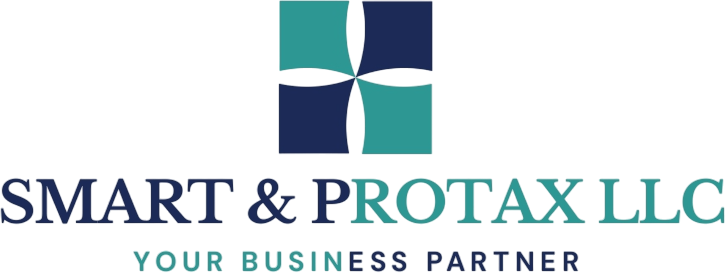Taxes can be a complex and overwhelming topic for many individuals and businesses. However, understanding and optimizing your tax situation is crucial for financial well-being. Proper tax planning can help you minimize liabilities, maximize deductions, and ensure compliance with the ever-changing tax laws. This blog provides expert insights into how you can assess and optimize your tax situation, offering practical advice and strategies to help you achieve your financial goals.
1. Understanding Your Current Tax Situation
Before you can optimize your taxes, you need to understand where you currently stand. Start by gathering all your financial documents, including income statements, previous tax returns, investment records, and details of any assets and liabilities. Here’s a step-by-step guide to assessing your current tax situation:
a. Review Last Year’s Tax Return
Start by reviewing your most recent tax return. This will give you a clear picture of your income, deductions, credits, and the taxes you owed or the refund you received. Identify any areas where you might have missed opportunities for deductions or credits.
b. Analyze Your Income Sources
List all sources of income, including salary, bonuses, rental income, dividends, interest, and any side business earnings. Different types of income are taxed differently, so understanding your income composition is key to planning effectively.
c. Evaluate Deductions and Credits
Review the deductions and credits you claimed in the past year. Common deductions include mortgage interest, medical expenses, charitable donations, and education expenses. Tax credits, such as the Child Tax Credit or education credits, can directly reduce your tax liability.
d. Assess Your Investments
Consider how your investments impact your taxes. For example, dividends, capital gains, and interest are taxed differently. Review your investment strategy with a tax advisor to determine if you could benefit from tax-efficient investing strategies, such as tax-loss harvesting or investing in tax-advantaged accounts.
2. Identifying Opportunities for Tax Optimization
Once you have a clear understanding of your current tax situation, you can begin identifying opportunities to optimize it. Here are some strategies that could help you reduce your tax burden:
a. Maximize Retirement Contributions
Contributing to retirement accounts like a 401(k) or an IRA can reduce your taxable income. For 2024, the contribution limit for a 401(k) is $22,500, with an additional $7,500 catch-up contribution allowed for those aged 50 and older. For IRAs, the limit is $7,000, with a $1,000 catch-up contribution. Consider maxing out these contributions if you can.
b. Utilize Tax-Advantaged Accounts
Health Savings Accounts (HSAs) and Flexible Spending Accounts (FSAs) allow you to pay for medical expenses with pre-tax dollars, reducing your taxable income. Additionally, contributions to an HSA can grow tax-free and be withdrawn tax-free for qualified medical expenses.
c. Leverage Tax Credits
Tax credits can significantly reduce your tax liability. Beyond common credits like the Earned Income Tax Credit (EITC) or Child Tax Credit, explore credits related to energy efficiency, education, and adoption. Make sure you meet the eligibility requirements to claim these credits.
d. Consider Charitable Contributions
Donating to qualified charitable organizations can provide substantial tax deductions. Keep detailed records of your donations and consider donating appreciated assets like stocks to avoid capital gains taxes while still receiving a deduction.
e. Optimize Your Filing Status
Your filing status (single, married filing jointly, married filing separately, head of household, or qualifying widow) can impact your tax liability. Review which status is most beneficial for your situation, especially if you’re married.
f. Plan for Capital Gains and Losses
Timing the sale of investments can affect your tax liability. Consider selling losing investments to offset gains in other assets (a strategy known as tax-loss harvesting). Also, long-term capital gains (on assets held for more than a year) are taxed at a lower rate than short-term gains.
3. Strategic Tax Planning for Businesses
For business owners, tax optimization is crucial for maintaining profitability. Here are some strategies tailored for businesses:
a. Choose the Right Business Structure
The structure of your business (sole proprietorship, partnership, LLC, S-Corp, C-Corp) affects how your income is taxed. For instance, an S-Corp allows you to pay yourself a salary and avoid self-employment taxes on the remaining profits, which are distributed as dividends.
b. Deduct Business Expenses
Ensure you’re deducting all eligible business expenses, such as office supplies, travel, and home office deductions. Proper record-keeping is essential to substantiate these deductions.
c. Defer Income and Accelerate Deductions
If your business operates on a cash basis, you might defer income to the next tax year by delaying invoicing. Similarly, you can accelerate deductions by prepaying expenses like rent or utilities before the end of the year.
d. Take Advantage of Tax Credits
Businesses can benefit from various tax credits, including the Research and Development (R&D) Tax Credit, Work Opportunity Tax Credit (WOTC), and credits for energy-efficient improvements. Work with a tax professional to identify and claim all applicable credits.
e. Plan for Depreciation
Depreciation allows you to deduct the cost of business assets over time. The IRS provides guidelines on how to depreciate assets like vehicles, machinery, and buildings. Bonus depreciation and Section 179 expensing allow you to accelerate deductions for certain assets.
4. Staying Compliant with Tax Laws
Tax laws are constantly changing, and staying compliant is critical to avoiding penalties. Here’s how you can stay on top of your tax obligations:
a. Stay Informed About Tax Law Changes
Tax laws can change annually, affecting deductions, credits, and tax rates. Stay informed by subscribing to tax newsletters, following reputable financial news sources, or consulting with a tax professional.
b. File Your Taxes on Time
Filing your taxes on time prevents late filing penalties and interest charges. If you’re unable to file by the deadline, consider filing for an extension, which gives you additional time to submit your return, though taxes owed are still due by the original deadline.
c. Keep Accurate Records
Maintain thorough records of all income, expenses, and deductions. Good record-keeping not only helps in preparing your tax return but also provides evidence in case of an audit.
d. Consider Quarterly Estimated Taxes
If you’re self-employed or have significant income not subject to withholding, you may need to make quarterly estimated tax payments. Failing to do so could result in penalties.
5. Working with a Tax Professional
Tax professionals, including Certified Public Accountants (CPAs) and Enrolled Agents (EAs), can offer invaluable expertise in optimizing your tax situation. Here’s how to work effectively with a tax professional:
a. Choose the Right Professional
Select a tax professional who specializes in your type of income or business. For example, if you own a small business, look for someone with experience in small business taxes.
b. Communicate Clearly
Provide your tax professional with all relevant information, including income sources, expenses, and previous tax returns. Clear communication helps them identify all potential tax-saving opportunities.
c. Plan for the Future
A good tax professional doesn’t just prepare your taxes; they help you plan for the future. Regular consultations can help you adjust your financial strategy to minimize future tax liabilities.
Conclusion
Optimizing your tax situation requires a proactive approach. By understanding your current tax position, identifying opportunities for optimization, and staying compliant with tax laws, you can significantly reduce your tax burden and enhance your financial health. Whether you’re an individual or a business owner, working with a knowledgeable tax professional can provide peace of mind and ensure you’re making the most of every tax-saving opportunity.
Tax planning is an ongoing process, and regularly revisiting your tax strategy is essential as your financial situation evolves. Start assessing and optimizing your tax situation today to achieve greater financial security tomorrow.




